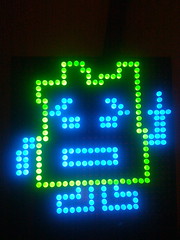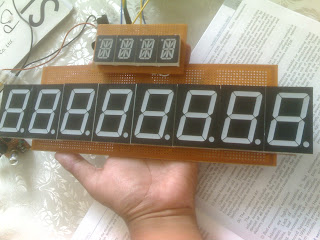
Knowing that I’m always happy to get something new and glowy, my wife brought home a cheap “floating pool light” that she found on sale for roughly $10. This is a large white floating ball that has LEDs inside and cycles through different colors. Meant to be put into a pool for neat effects, we found it to be much more interesting just used around the house.
However, it was a bit too bright and cycled colors too quickly for our taste. It was actually somewhat distracting when we were just trying to sit and have a few beers late at night on our patio. This gave me a perfect excuse to tear it apart and start hacking… like I wasn’t going to do that anyway.
What I found inside was extremely simple. There’s a single un-marked chip that holds the different display modes (there were 3 display modes: warm, cool, and white). The LEDs were arranged in an array of Reds, Blues, Greens, and Whites (half marked yellow).




My goal was to make this a little more tolerable as mood lighting, so I needed to draw up a plan. I have an arduino sitting here from the redbull contest, so I figured why not hook it up to that? It would allow full PWM control of the channels and I could do some pre-programmed sequences if I wanted.
This was ridiculously easy. All I needed to do was solder leads on to each of the LED channels. There are already great tutorials on how to run PWM from the arduino and a couple quick additions would give me direct controls over each channel via potentiometers. So problem solved right?
Well, sort of. It really bugs me that there’s an entire arduino there just for some PWM. I can go buy the components to do 555 timer PWM circuits if all I want is PWM. Then again, if I compare the price, that free arduino is a much cheaper solution than buying 2xcaps, 1×555, 1xtransistor, and assorted resistors and diodes, especially if consider that I’d have to buy it all in triplicate.
Ultimately if I wanted to just leave this as PWM control on each channel, I’d opt for the 555 circuit. What else is there to do with a glowing ball? Simple notification system? Sound reactive? Give me some ideas.
Filed under:
Ask Hackaday 





















